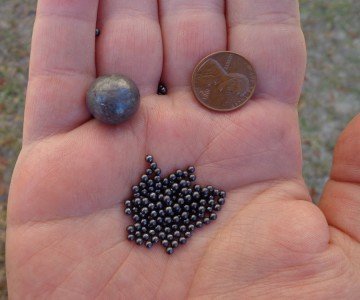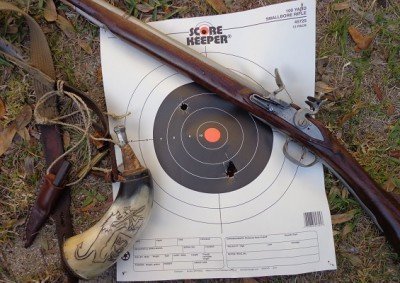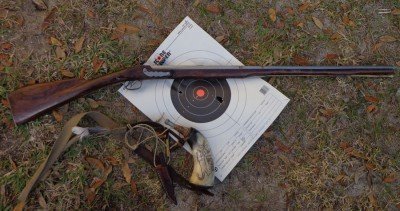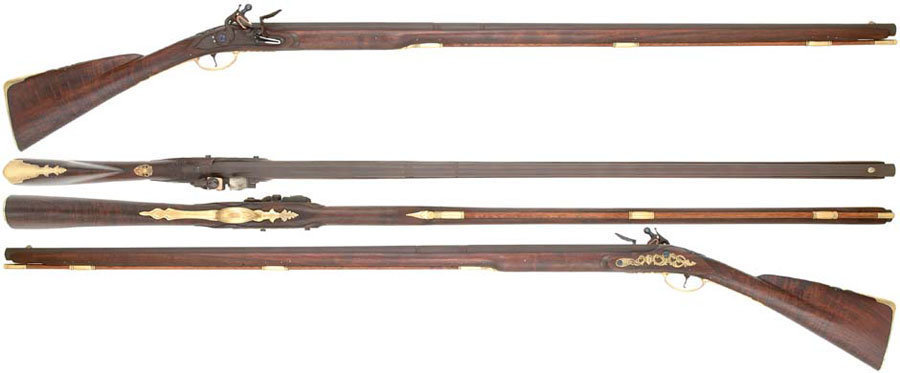Editor’s note: Sometimes the internet fails us. It is supposed to be easy to access and even easier to find the right information. But there are still practical language barriers. “Fusil de Chasse” translates to “gun of the hunt.” That’s a bit ambiguous. In modern French, it refers to a shotgun. But we’re talking about a different type of gun, one that has much more historical significance.
Resources:
>Build This Flintlock Rifle from $793
What is a Fusil de Chasse?
Through the 1600s, France expanded its North American possessions from the snows of Canada to the swamps of Louisiana and down to the sugar islands of the Caribbean. The fact that these colonies, collectively known as New France, existed more for trade than actual colonization, combined with the presence of few French troops in this vast area, meant that there was a need for guns.
[full_width]

The Fusil epitomizes the long gun. The length aided in accuracy, but also kept loading up front and easy to see chest high. This is a Type C Fusil from Track of the Wolf.
[/full_width]
In 1696, the Tulle arsenal was established in France to fulfill royal contracts for muskets and pistols. They made a number of types meant for the colonies including ordinary muskets and buccaneer muskets. They also started production on a light musket meant for those who hunted for a living, the Fusil de Chasse. The state arsenal at St. Etienne was brought in to meet the demand and the new muskets were shipped to New France.
After several wars with the English, France’s forces in North America were defeated by their better supplied British rivals in the French & Indian War. The end of New France also meant the end of civilian musket production. But French muskets of all varieties in former New France continued in use through the American Revolution and beyond.
Features
The Fusil de Chasse’s basic design was largely unchanged through its production and is little more than a lightweight version of the infantry muskets of the day. Like the originals, mine has a full length walnut stock with a distinctly shaped buttstock that resembles a cow’s hoof.
I made most of this gun from scratch, though there are a variety of kits available for this model from places like Track of the Wolf, as well as complete guns. My gun is only inaccurate historically because of the left handed lock. According the factory records of the time, Left handed muskets like this were exceedingly rare.
Tulle muskets were stocked in either brass or iron depending on the ultimate destination and mine is stocked in iron and wears a thirty-six inch 62 caliber smoothbore barrel that is a bit handier than the original forty-four inch of the original factory models. It is also equipped with a left handed flintlock mechanism instead of one that sits on the right side. The gun is also only equipped with a front blade sight.
Shooting
The Fusil is not a rifle, but a smoothbore musket. With a proper patched round ball loading (or a similar close-to-bore sized ball like seen in the video) one could get pie plate like accuracy at 100 yards. I am primarily a maker, and I’m more interested in the history than the accuracy.

A sample of ammunition that may be used in the Fusil de Chasse. One large round ball for large game or shot of varying sizes.
Since the Fusil is a smoothbore, most treated it like we treat shotguns and used a variety of ammunition, which was great as most people could only afford one gun anyway. And supply-lines were scarce in the frontier.
For testing, I selected a load that I hoped would give me best accuracy while maintaining authenticity to the 18th century. My standby powder, Graf and Son’s 2F black powder, was in my horn for propellant. Unlike 18th century rifles, smoothbores were usually shot with a bare ball cushioned with wads. I chose cut paper wads 1 x 1 ½ inch and folded in half. For projectiles, I chose a.610 inch 342 grain lead balls that are very close to bore size but still easy to load.
How accurate is it? It depends on what you shoot. While I chose to stick to round ball loadings, smoothbores like the Fusil have the option of using birdshot and buckshot like today’s shotguns. Imagine what you can do with modern smoothbores. Most prefer rifled barrels for dedicated slug guns–and most slugs have well designed projectiles that aid in accuracy. A smoothbore musket would can rival the accuracy of slugs from non-rifled barrels.
Shooting shot has two additional challenges. The first is containing the shot effectively. Modern shot-shells do a fine job of that. The other is a slight pause between the trigger pull and the bang as the spark ignites the powder. It is minuscule, but can be enough to throw off the timing of someone used to the immediacy of modern shotguns.

Accuracy isn’t stellar. The design makes compromises. The gun will shoot just about anything, which was damn useful at the time.
Since I am not a flintlock shooter by trade, I set up my target at twenty five yards for testing. The load was not as quick as paper cartridge shooting but was relatively easy to load and rather accurate with little felt recoil thanks to the Fusil’s handling characteristics.
The group measured about five inches. Not very impressive for an experienced smoothbore shooter, but I was happy and did not feel the need to push my limits to 50 or 100 yards, though the Fusil and its 340 grain lead ball could easily reach out to those distances with energy to spare.
Final Thoughts
The Fusil de Chasse is perhaps more popular today than in colonial times. Why would anyone with access to a good 870 care about a Fusil? Flintlocks like the Fusil de Chasse have a small but devoted following because of special muzzleloading seasons and hunts in areas off limits to modern guns.
But it is really the appeal of shooting a historical weapon. The Fusil is a plain, yet elegant and reliable musket that served to put food on the table. These muskets also gave George Washington and other future commanders of the American Revolution a tragic baptism of fire.
The Fusil also has a following as a survival tool because of the versatility factor and the ability to control powder charges and loads, as well as the simplicity of the lock mechanism. The Fusil as prepper’s tool may seem strange to some, but it has potential–especially if the world were to descend into the regressive dystopian wasteland so popular with novelists.
In my experience, the Fusil de Chasse is a natural pointing and natural shooting long gun that weighs less than many modern hunting rifles, yet offers versatility today’s guns cannot match.
[full_width][/full_width]
Even though the history of America would be written from the English perspective, the history and use of the Fusil de Chasse and its cousins has continued. That just may be the true testament to a simple hunting gun that still does the job.
About the Author:
Terril Hebert, better known as Mark3smle on the Web, is a lifelong outdoorsman from Louisiana. When he is not at his bench making flintlock firearms he is making firearm videos for the Mark3smle YouTube channel with an emphasis on historic firearms.

